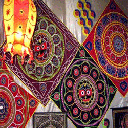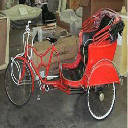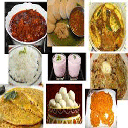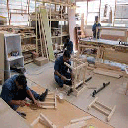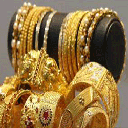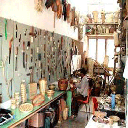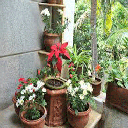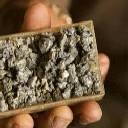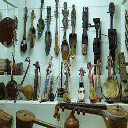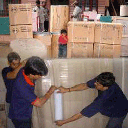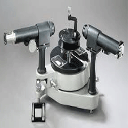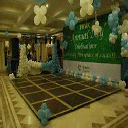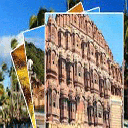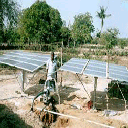Bihar`s antiquity is evident from its name, which is derived from the ancient word "VIHARA" (monastery). It is indeed a land of monasteries. Hindu, Buddhist, Jain, Muslim and Sikh shrines abound in this ancient land where India's first major empires rose and fell. Where the ruins of the worlds' earliest university slumbers in the void of time. The passage of Ganga, flowing wide and deep enrich the plains of Bihar before distributing in Bengal's deltoid zone.
Among all Indian states, Bihar is the one most intimately linked to the Buddha`s life, resulting in a trail of pilgrimages which have come to be known as the Buddhist circuit. The Buddhist trail begins at the capital city, Patna, where a noteworthy museum contains a collection of Hindu and Buddhist sculptures as well as a terracotta urn said to contain the ashes of Lord Buddha.
The Khuda Baksh Oriental Library has rare Muslim manuscripts including some from the University of Cordoba in Spain. 40 km away, Vaishali, was the site for the second Buddhist Council is the presence of ruins testify. 90 km south of Patna is Nalanda which translates as the place that confers the lotus (of spiritual knowledge). A monastic university flourished here from the 5th to the 11th century. It is said to have contained nine million books, with 2,000 teachers to impart knowledge to 10,000 students who came from all over the Buddhist world. Lord Buddha himself taught here and Hieun Tsang, the 7th century Chinese traveler, was a student. Ongoing excavations have uncovered temples, monasteries and lecture halls. Rajgir, the royal palace, 12 km south, was the venue for the first Buddhist Council.
The Buddha spent five years at Rajgir after having attained enlightenment, and many of the remains at Rajgir commemorate various incidents related to life of Buddha, the hill of Gridhrakuta being perhaps the most important, as this is where the Buddha delivered most of his sermons. Bodhgaya is the spot where Lord Buddha attained enlightenment, with the Mahabodhi Temple marking the precise location.
This landlocked state of Bihar is surrounded by Nepal, Bengal, Orissa, Madhya Pradesh, Uttar Pradesh and comprises four cultural regions-Bhojpur, Mithila and Magadha and Chotanagpur. Rivers Kosi and Gandak from the north and Sone from the south join the Ganga. In the fertile plains, rice, sugarcane, oilseeds, gram, maize, jute, barley and wheat are cultivated.
Vaishali: Vaishali was one of the earliest republics in the world (6th century BC).It was here that Buddha preached his last sermon. Vaishali, birthplace of Lord Mahavira is also Sacred to Jains.
Patna: Patna once called Patliputra the capital of Bihar, is among the world's oldest capital cities with unbroken history of many centuries as imperial metropolis of the Mauryas and Guptas imperial dynasties.
Rajgir: Rajgir,19 kms from Nalanda, was the ancient capital of Magadha Empire. Lord Buddha often visited the monastery here to meditate and to preach. Rajgir is also a place sacred to the Jains, Since Lord Mahavira spent many years here.
Pawapuri: In Pawapuri, or Apapuri, 38 kilometres from Rajgir and 90 kilometres from Patna, all sins end for a devout Jain. Lord Mahavira, the final tirthankar and founder of Jainism, breathed his last at this place.
Bodhgaya: Near the holy city of Gaya, the Buddha attained enlightenment. The tree that had sheltered him came to be known as the Bodhi tree and the place Bodhgaya. Today Bodhgaya, an important place of pilgrimage, has a number of monasteries, some of them established by Buddhists of Japan, Thailand, Myanmar, Sri Lanka etc.
Nalanda: A great centre of Buddhist learning, Nalanda came into prominence around the 5th century BC and was a flourishing university town with over ten thousand scholars and an extensive library.
Kesaria: This Stupa is in fact one of the many memorable stupa remarkable event in the life of Buddha. Kesaria has a lofty brick mound capped by a solid brick tower of considerable size, which it self is the remain of a Buddhist Stupa. The mound is a ruin with a diameter of 68 feet at its base and a total height of 5½ ft. originally it was crowned by a pinnacle which must have stood 80 or 90 ft above the ground. General Cunningham dated this monument to AD 200 to 700, and held that it was built upon the ruins of a much older and larger Stupa.
It is the highest Stupa found in the country with a height of about 104 from the base.
Tar (Bhojpur): Situated about 10 kms North West of Piro the village derives its name from Tarka, a she demon killed by lord Rama. There is an old tank in the village that is said to be the wrestling ground of Tarka.
Ahirauli (Buxur): Situated about 5 kms north-east of Buxur, this village has a temple of Devi Ahilya. According to the local tradition it dates back to the pre historic ages. Legend is that, Ahilya was transformed into stone as a result of curse of her husband, Rishi Gautam and she could be redeemed only when lord Ram Chandra visited her place.
Ram Rekha Ghat (Buxur): According to the legends, lord Ram Chandra and his younger brother Lakshman with their teacher Rishi Vishwamitra had crossed the Ganga here on their way to Janakpur where he later took part in the Sita swayambar (the public ceremony of Sita's Marriage).
Pretshila Hills (Gaya): About 8 kms North-West of Gaya, the 873 feet high Pretshila Hills is situated. The literal meaning is the Hill of ghosts and it is sacred to yam, the Hindu god of hell and forms one of the sacred places of pilgrimage. On the top of the hill is a small temple, appropriately dedicated to Yam (The God of death).
Giddheshwar (Jamui): According to local legends, the epic fight between the vulture Jatayu and the demon Ravan took place here on the hill that is situated about 13 km south of Jamui, while the latter was abducting Sita. There is a temple of Lord Shiva, which draws big crowds on the occasion of Shivratri and Maghi Purnima.
Kako (Jehanabad): Situated 10 km each of Jehanabad Railway station. According to a local legends, Lord Ramchandra’s step mother, Rani Kekaiy of Ayodhya lived here for some time and the village took its name after her. The village has also a tomb of Hazarat Bibi, Kamal Sahiba; a great muslim lady saint. I is said that this lady was the aunt of Haryat Makdum Saheb of Bihar Sharif and Possessed devine powers.
Singheshwar Asthan (Madhepura): Singheshwar Sthan has been the abode of Lord Siva from the ancient times. Though there are various stories about the establishment of the Singheshwar temple, the one that is widely and popularly accepted, relates to Rishi Shringi. In ancient time Singheshwar was situated on the bank of the river Kosi and was surrounded by dense and lush green forest. It was ideally situated for ‘Tapasya’ (Meditation) and it is here that Vibhandak Rishi along with is son Rishi Shringi devoted all his time in deep meditation.
Phullahar (Madhubani): The village is situated about 6 kms West of the block headquarters at Umgaon under Harlakhi P.S. The village countains the temple of Goddess Girija. It is said that Sita, the daughter of king Janak, used to come here every day to worship the Goddess. Lord Rama saw her for the first time at this place.
Sita Kund (Munger): A village about 6 Kms East of the Munger town contains a hot spring known as the Sita Kund spring, which is so called after the well known episode of Ramayan. Ram, after rescuing his wife Sita from the demon king Ravan, suspected that she could not have maintained her honour intact, and Sita, to prove her chastity, agreed to enter a blazing fire. She came out of the fiery or deal unscathed, and imparted to the pool in which she bathed, the heat she had absorbed from the fire. The hot spring is now enclosed in a masonry reservoir and is visited by large number of pilgrims, specially at the full moon of Magh.
Ramchura (Vaishali): The place is situated in Vaishali block, where a fair is held every year on Ram Nawami day. the local tradition has it that lord Ram Chandra had a stopover here for a bath on his way to Janakpur. There are some marks on stone, which are said to be his footprints.
Ahilya Asthan (Darbhanga): The village is situated about 24 kms North West of Darbhanga and about 4 kms from Kamtaul Railway Station. It is known for the temple of Ahilya Asthan, which is associated with the well known legend of the sage Gautam and his wife Ahilya as told in the epics and Puranas. Inside the Shrine is a flat stone said to contain the foot prints of Sita, wife of Ram, as the main object of worship.
Janki Temple (Sitamarhi): This temple is traditionally considered to be the birth place of Sita or Janki, the daughter of king Janak. This temple, however seems to have been built about 100 years ago.
Janki Temple (Punausa): This temple is about 5 kms South West of Sitamarhi. It also Stakes the same claim to be the birth place of Sita and is considered to be sacred place where people go for a pilgrimage.
Haleshwar Asthan (Sitamarhi): This is an ancient temple of Lord Shiva about 3 kms North-West of Sitamarhi. According to myths the King of Videha on the occasion of Putrayesthi Yojna, founded this temple.
Panth Pakar (Sitamarhi): An age old banyan… tree still stands here about 8 kms North-East of Sitamarhi. It is said that when Sita left Janakpur in a Paanquin for Ayodhya after the marriage to Shri Ram, she was given rest for a while under this very banyan tree.
Chanki Garh (West Champaran): Also known as Janaki Garh, this village is situated about 9 kms East of Ram Nagar Railway Station. There is a large mound in the eastern part of the village. It is a mass of solid brickwork and is 90’ high. It was probably originally a Fort and the remains of fortification can still be seen. The local tradition asserts that it was a Fort of king Janak.
Valmiki Nagar (West Champaran): This is a village on the Indo Nepal border 42 kms North-West of Bagaha to which it is connected by a metalled road. A barrage has been constructed here on the Gandak river for the purpose of irrigation. Besides an old Shiva temple constructed by the Bettiah Raj, there are also ancient temple of Nara Devi and Gauri Shankar at Valmiki Nagar.
There is a Valmiki Ashram, which is said to be the place where Maharshi Valmiki was living. On the occasion of Makar Sankranti every year a fair is held on the bank of River Gandak.
Maner Sharif (Patna, Maner): It is a large village of historical antiquities, situated in the extreme north west of Danapur Sub-division, about 32 kms west of Patna on Patna-Arrah Highway. In the early ages Maner was a centre of learning and it is said that grammarian Panini, and also Bararuchi, lived and studied here. Maner contains two well-known Mohammedan tombs, that of Shah Daulat or Makhdum Daulat, known as Chhoti Dargah, and the other that of Sheikh Yahia Maneri or Makhdum Yahia, called the Bari Dargah. Makhdum Daulat died at Maner in 1608, and Ibrahim Khan, Governor of Bihar and one of the saint's disciples completed the erection of his mausoleum in 1616. The building is exceptionally fine one, with walls containing carvings of great delicacy and high finish. A great dome crowns it, and the ceiling is covered with carved inscriptions from the Quran. Every detail of it is characteristic of the architecture of Jehangir's region, and it is by far the finest monument of the Mughals in Eastern India. Inside the compound there is a mosque also built by Ibrahim Khan in 1619, whiles a fine gateway bearing an older inscription corresponding to 1603-01, and affords access to the north. The tomb of Yahia Maneri lies in a mosque walls and ghats, and pillared porticos jutting out into it, which is connected with the old bed of the River Sone by a tunnel 400-ft long.
Khankah Mujibia (Phulwari Sharif, Patna): Nearly 7 kms from Patna Railway Station, Phulwari Sharif is an important Islamic pilgrimage. It has been always a favorite abode of Sufi saints in various times. Hazrat Pir Muzibullah Quadri was one of those in the 18th Century. The Khankah Muzibia, founded by him at Phulwari Sharif is called the Bari Khankah. An old Madarsa here has been the most important centre for teaching of Islamic philosophy since its establishment.
Sacred hairs of the beard of Paigamber Hazrat Muhammad Saheb are preserved here in Banri Khankah that attracts throngs of his followers and a big mela is held every year.
There is also an archeologically important and worth seeing ancient Sangi Masjid (mosque) built of red stones at Phulwari Sharif. It was built by the Mughal Emperor Humayun.
Khankah Emadia (Mangal Talab, Patna City, Patna): One of the off-springs in the family of prominent Sufi Saint Hazrat Pir Muzibullah Quadri had founded another Khankah during 19th century near a tank called Mangal Talab that is situated in the Patna City Chowk area. It is called Khankah Emadia that houses a Madarsa. An Urs is held here annually when throngs of devotees assemble and pay their respect to their beloved Sufi Saint.
Dargah Sharif, Mithan Ghat (Patna City, Patna): A beautiful double storied mosque was built by Mughal Prince Azim on the banks of Ganges at Mittan Ghat, Patna City area that was previously called Azimabad during the reign of Mughal Emperor Aurangzeb. This mosque was built for Mulla Mittan who was teacher of the Prince. It was the place from where the great Sufi Saint Hazrat Makhdum Munnem used to preach his disciples during the 18th Century. The ancient mosque still exists and is popularly known as Dargah Sharif. Every year, after 5 days of "the Eid festival, an annual Urs Chiraga is held here when devotees assemble at this Dargah Sharif in great numbers.
Hajipur Karbala (Vaishali): It was constructed 175 years ago by Shah Alam. It attracts a large crowd of Muslims throughout the years.
Hasanpura (Siwan): The village is situated about 21 kms South of Siwan on the bank of Dhanai river. According to tradition, Makhdum Saiyed Hasan Chisti, a saint who came from Arabia to India and settled here, founded this village. He also founded a Khankah (religious institution) here. The village contains remains of a large mosque and tomb of the Saint, which is visited by both Hindus and Muslims. The grave is a large open court to the west of the village. In front of it is a basalt image of Vishnu but it has been ruthlessly treated. It is regarded as an inauspicious fiend who has turned into stone by the holy Makdum and must not be raised or placed erect. It contains no inscription but its style shows it to belong to about the seventh century A.D.
Bibi Kamaal Sahiba (Kako, Jehanabad): The village is the headquarters of the block of the same name and is situated on the Jehanabad-Bihar Sharif road, about 10 kms East of Jehanabad railway tation. According to a local legend, Ram Chandra's stepmother, Rani Kaikeyi of Ayodhya lived here for sometime and the village took its name after her. The village took its name after her. The village has also a tomb of Hazrat Bibi Kamaal Sahiba, a great Muslim lady saint. It is said that this lady was the aunt of Hazrat Makhdum Saheb of Bihar Sharif and possessed divine powers.
Bari Dargah (Bihar Sharif, Nalanda): This is headquarters of Nalanda district that lays 30 kms South of Bakhtiarpur on NH-31. This is also a railhead on the Bakhtiarpur Rajgir branch line of the Eastern Indian Railway. This town is known as Bihar Sharif, owing to its many Muslim tombs that still retain traces of its former importance as a Muslim pilgrimage. There is a hill called Pir Pahari, about 1 m to the northwest of the town. At its summit is the dargah or mausoleum of the Saint Mallik Ibrahim Bayu, round which are tem smaller tombs. It is a brick structure surmounted by a dome and bears inscriptions showing that the saint died in 1353. Another great dargah is that of Mokhdum Shah Sharif ud-din, also called Makhdum-ul-Mulk, died here in 1379; the inscription over the entrance shows that his tomb was built in 1569. This tomb, which stands on the south bank of the river, is held in great veneration by the local Mohammedans, who assemble here on the 5th day of Sawan to celebrate the anniversary of his death. The Chhoti Dargah is the shrine of Badruddin Badr-I-Alam, famous saint who died here in 1440.
Chhoti Dargah (Bihar Sharif, Nalanda): Dargah of Makhdum Hazrat Sultan Ahmed Charampose, Bihar Sharif (Nalanda).
The biggest and the oldest building of Mohalla-Amber in the Bihar Sharif Town (Nalanda), is Tomb of Hazarat Makhdum Sultan Saiyad Shah Ahmed Charampose Teg Barhana Rohmatulla Alaib. He was born in the year 1236 and passed away in 1335 (according to Islamic calendar 657-776 Hizri). He is ranked to a very high order among other Sufi saints and Auliahs.
Thousands and thousand of people participate in the ‘Urs’ celebrated here in memory of the Saint every year.
Motihari (East Champaran): Motihari was to
the first laboratory of Gandhian experiment in Satyagraha and probably
it will not be very incorrect to say that is has been the spring board
for India’s independence. Champaran district generated a wave of
enthusiasm and inspiration to the people who were thirsting for a
selfless and saintly leader. The technique followed by Gandhiji in
Champaran was what attained later on the name of Satyagraha.
Hazarimal Dharamshala, Betia (West Champaran): It is at Betiah in
the Lal Bazar area. Gandhi and his companions used to camp here and it
was the epicenter of his “Satyagraha”. The State Govt. has declared this
building a protected monument. The Betia Raj Kuteherry and the
Dharmashala were Mahatama Gandhi stayed are well worth visit.
Bhitharwa Ashram (West Champaran): It is a village in the Bettiah
Sub-division under Gaunaha Block. This was one of the centre for social
work selected by Gandhiji, when he was in Champaran in 1917.
At present there is a Khadi Centre working under direct
control of the Bihar Khadi Samiti. There is a Gandhi Ashram where
Mahatma Gandhi had stayed during the Indian freedom straggle.
Brindaba (West Champaran): It is a small village in the Betia
sub-division under Champatia Block. It has the Gram Seva Kendra, which
had been planned to work out the deals of the Gandhi Seva Sangh. The all
India Gandhi Seva Sangh held there annual conference at this village in
1937. Mahatma Gandhi and Dr. Rajendra Prasad attended it. Gandhiji
stayed here in 1939 and started an Ashram, which is still functioning.
Shri Rampur (West Champaran): Situated in the Gannaha Block of
Bhitiharwa Panchayat. Gandhiji had stayed here on 16th November, 1917.
Koeldih (West Champaran): Under Gaunaha Block in the Belwa
Panchayat. Gandhiji had visited this place on 16th November, 1917.
Amolwa (West Champaran): Under Gaunaha Block in the Majharia
Panchayat, where Gandhiji spent a night on the 27th April, 1917 with his
other companions.
Murli Bharhawa (West Champaran): It was the native place of
Pandit Raj Kumar Shukla who had been a close associates of Mahatma
Gandhi during the Champaran Satyagrah Movement. Pandit Shukla took a
lead role in bringing Mahatma Gandhi to Champaran.
Sariswa (West Champaran): This place is in Ratanmala Panchayat
under Majhaulia Block-Gandhiji and his companions had taken statement of
raiyats in a open yard in front of the temple.
Hardiya Kothi (West Champaran): It is under Bishunpur Panchyat of
the Nautan Block. It was house of Mr. G. P. Edward, a British Indigo
Planter. Remains of this building are in some what better condition in
comparison to other such old buildings.
Sadaquat Ashram (Patna): It is situated in Digha area on Patna
Danapur Road and in pre independence days guided the freedom movement in
Bihar. It is Associated with the memories of Mahatma Gandhi, Dr.
Rajendra Prasad, Mautana Mazharal Haque and other leaders.
Gandhi Sangrahalay (Patna Museum): Close to the Western end of
Gandhi Maidan in Patna. The Gandhi Sangrahalaya houses a large number of
items and artifacts related with Mahatma Gandhi and his satyagrah
movement in Bihar. It also has a vast collection of Gandhian literature
and photographs depicting his life and works. A “Charkha” (Country made
spinning wheel) used by Mahatma Gandhi is also well preserved in this
museum.
How To Reach Bihar A natural destination for national and international tourists throughout the year, Bihar is well connected through air and rail services with rest of the country.
Air: All major airlines operate flights directly to Patna.Indian Airlines operates daily flights to, Delhi Kolkata and Ranchi and Lucknow.The office is located next to Hotel Maurya ,Patna.Sahara Air and Air Deccan also has a daily flight from Patna to other cities. Some international flights also operate from Gaya airport. The airport is 7km west of the city centre.
Rail: The railway station is located in the centre of the Patna. It connects the city to all major cities and towns of India. There are direct trains daily for New Delhi, Kolkata, Varanasi, Ranchi and northeastern states like Assam.
Bus: The bus stand has shifted to Mithapur at the outskirt of the Patna city. There are buses to almost all the places within the state and also for Ranchi, Siliguri etc.The fare varies according to the speed of the service. Auto rickshaw- Shared auto rickshaws runs within the city and in most parts of the state. They are cheap and shuttle between different points.


